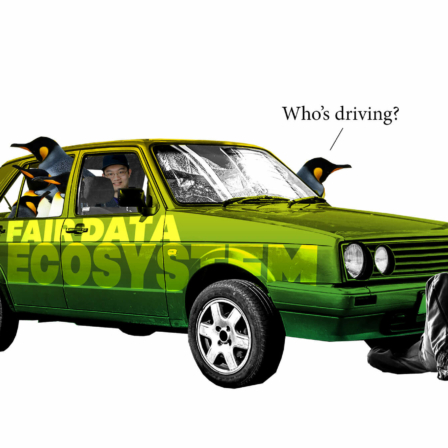What was this work about?
Diverse provision and the use of electronic services require secure electronic identification systems of users and an exchange of information between databases in a unified way. The shared data exchange layer meets this particular need. It is a layer for the transmission of information and defines how information is transmitted between different information systems. For example, it can be used to take advantage of existing databases in the production of new types of services. The technical implementation of the data exchange layer will be based on X-Road, a platform for the transmission of information used in Estonia, and it will follow the same principles.
Sitra’s project aimed to create an operating environment for more agile e-services and to promote the use of shared information and the opening up of access to public data. With more agile e-services, new business is generated, individuals own their personal information and can take more responsibility for their own matters. In addition, e-services in Finland will increase and new ways to transmit information will reduce costs and increase productivity.
The operating environment consists of national solutions and operating practices that are available for everyone to use: the data exchange layer, secure system to identify users and new services exploiting the data exchange layer. The foundation can be used by, for example, the services of the real-time economy, such as a national income register or an electronic register detailing the owners of apartments.
How did this work proceed?
Sitra’s projects promoted extensive co-operation between the private sector and public administration. Between 2013 and 2015, the importance of a national solution and co-operation was highlighted with the help of reports and events.
For example, Sitra investigated the advantages and functioning of the data exchange layer through experimentation. Sitra funded two data exchange layer pilot projects in Espoo and Lahti to test the suitability of Estonia’s X-Road solution for the organisation and provision of social and healthcare services.
The development and promotion of new services that exploit the national infrastructure solutions were the central objectives of the focus area. For example, services like a national income register and an electronic apartment owner register may not become the most important services for any individual organisation, but very many will benefit from them and their implementation will enjoy wide support. Sitra’s reports and events for stakeholders were aimed at enhancing the implementation of both services. The establishment of the ICT2015 follow-up group also takes advantage of new forms of co-operation at the governmental level.
Who was involved?
The work was carried out in close co-operation with the Ministry of Finance, other ministries, municipal bodies and companies. The implementation of the data exchange layer was also enhanced by drawing up implementation reports together with nine local authorities on how well suited the data exchange layer is to meeting the needs of local authorities and how its implementation stage can be launched smoothly in local authorities. The progress of the implementation of the data exchange layer was monitored in the social welfare and healthcare sector through co-operation involving the Association of Finnish Local and Regional Authorities and the Ministry of Social Affairs and Health and by carrying out reports on the information security and the cost benefits of the data exchange layer.
The Ministry of Finance, the Ministry of Transport and Communications, the Population Register Centre and Sitra planned a central government-led systems to identify users in 2013. The planning of this solution continued in co-operation with the providers of the identification systems in 2014. The result was a government proposal drawn up by the Ministry of Finance and the Ministry of Transport and Communications, approved by the Finnish Parliament in January 2015.
What was achieved?
A favourable environment for e-services and for the development of new services is now being created. At the moment, organisations in the public sector have the obligation or the right to use the data exchange layer. Organisations in the private sector have the right to use the data exchange layer for the transfer of information. The obligation to use the data exchange layer began on 15 July 2016. This obligation means that measures to join the service must be launched. The new kind of service architecture is not just a national issue: in March 2017, Finland and Estonia agreed to set up a joint institute to develop X-Road technology.
Similarly, organisations in the public sector have the obligation or the right to use the Suomi.fi identification of the users in the services they provide, if the services require strong identification of the user. Organisations that have the obligation to use the service must implement it by 1 January 2018. The national income register will be introduced in 2019. The electronic apartment owner register project is one of the key projects launched by the present government in Finland. For citizens, the result is the Suomi.fi service that was completed on schedule and, thanks to a realistic plan, stayed under budget, as was mentioned in the release of the Population Register Centre in November 2017 (link in Finnish).
Traditionally, very little co-operation has been carried out in ICT and information management between different organisations, be they ministries, states, local authorities or other organisations. We have managed to move from a scattered system to extensive co-operation. In national projects, new types of shared and co-ordinated ways of working are already realised in practice.
What will be the significance of this work in future?
The use of public and commercial services online requires electronic identification of users and management of authorisations and roles. Electronic identification and e-services enable citizens to check and update their own information.
Through a shared data exchange layer, it is possible to exploit the existing data stores of public organisations for the provision of services. The data exchange layer enables the use of registration data where it is needed, so one location is sufficient for storing the many kinds of registration data, such as patient records, the motor vehicle register and professional practice rights.
The data exchange layer offers the greatest additional value to services such as those in the real-time economy. The infrastructure of the real-time economy helps automate internal information flows, both within companies and between different public bodies, to reduce the amount of routine work, improve risk management and increase up-to-date information.

















Recommended
Have some more.